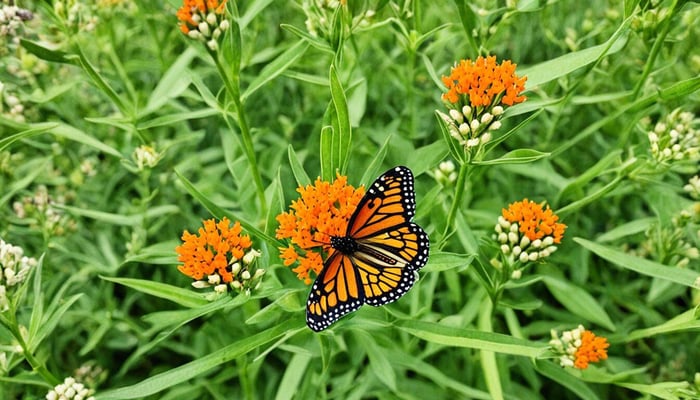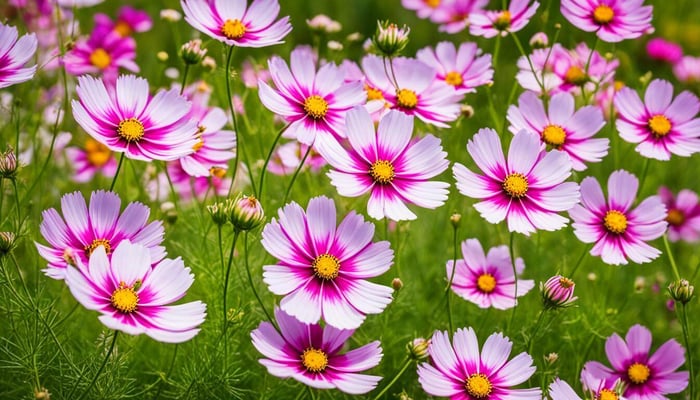Broadleaf milkweed, scientifically known as Asclepias Latifolia, is a perennial flowering plant that belongs to the milkweed family (Asclepiadaceae). This remarkable species is native to North America and is commonly found in regions stretching from California to Texas and as far north as Oregon. Learning how to grow broadleaf milkweed from seed is vital to help keep monarch butterflies alive and thriving.
The broadleaf milkweed can grow up to three feet tall, featuring thick, lance-shaped leaves that are oppositely arranged along the stem. Its beautiful flowers bloom in clusters at the top of the plant and exhibit a striking range of colors, including shades of pink, purple, and white.
Importance of Growing Milkweed for Supporting Pollinators, Especially Monarch Butterflies
Growing milkweed supports pollinators, particularly our beloved monarch butterflies (Danaus plexippus). Monarchs depend heavily on milkweed plants during their lifecycle since they lay their eggs exclusively on these plants.
The caterpillars that emerge from these eggs feed voraciously on the leaves of milkweed plants. Milkweeds contain specific chemicals called cardiac glycosides that protect monarch caterpillars against predators throughout their growth stages.
The interconnected relationship between monarch butterflies and milkweed goes beyond sustenance; it revolves around survival. Monarchs require milkweeds for food and shelter during their long-distance migration from Canada to Mexico.
By providing ample habitat for monarchs through growing milkweeds, we actively contribute to ensuring this iconic butterfly species' continued existence and conservation. Therefore, it becomes essential for gardeners and nature enthusiasts alike to cultivate broadleaf milkweed.
$9.95
Milkweed Seed Assortment For Planting – 4 Stunning Varieties to Attract Monarch Butterflies and Beautify Your Garden Transform your garden into a thriving paradise with our Milkweed Seed Assortment for Planting. This exclusive collection features four exquisite Milkweed varieties -… read moreMilkweed Seeds For Monarch Butterflies | 4 Variety Pack
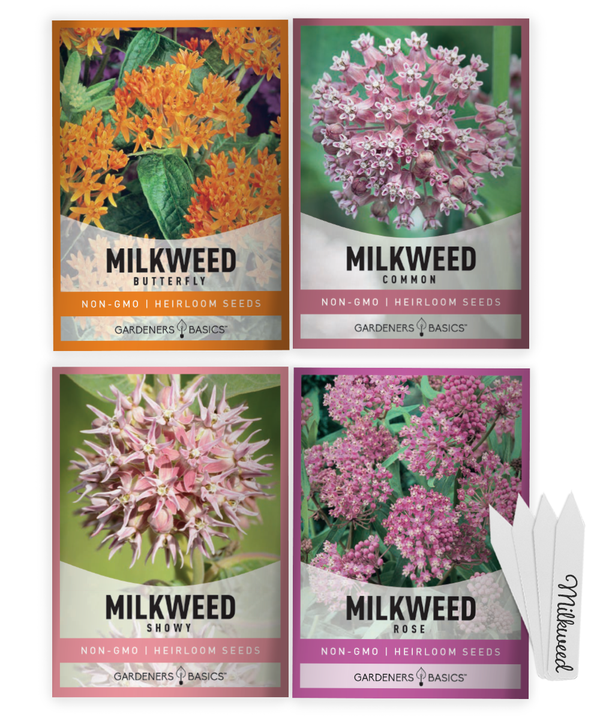
Description and Characteristics of Broadleaf Milkweed Plants
Broadleaf milkweed (Asclepias latifolia) is a fascinating perennial plant that belongs to the Apocynaceae family. It is characterized by its broad, oval-shaped leaves, which have a grayish-green hue and measure approximately 4-6 inches in length. The plant typically grows to a height of 1-3 feet, boasting sturdy stems that may branch out as it matures.
Broadleaf milkweed also features clusters of attractive pink or lavender-colored flowers, known for their intricate structure and sweet fragrance. These blooms are a magnet for pollinators, including bees, butterflies, and hummingbirds.
- Days till Maturity: Typically, broadleaf milkweed reaches maturity in its second growing season. Flowers may appear in the first year, but full maturity, with optimal flowering, is usually achieved in the second year.
- Planting Depth: Sow the seeds about 1/4 inch deep in the soil.
- Plant Spacing: Space the plants approximately 18 inches apart to allow enough room for mature growth.
- Days to Germination: Germination usually occurs 10 to 30 days after sowing, provided the seeds have been appropriately stratified.
- Indoors or Direct Sown: Seeds can be started indoors for early growth or directly sown outside. Starting indoors allows for better control over the germination environment.
- Full Sun or Partial Shade: Broadleaf milkweed thrives best in full sun, requiring at least 6 hours of direct sunlight daily.
- When to Harvest: Generally, milkweed is not harvested for consumption due to its toxicity. However, seed pods can be collected in late summer or early fall when they begin to dry and crack open.
- How Tall Does the Plant Get: Broadleaf milkweed can reach heights of 2 to 4 feet (60 to 120 cm) when fully grown.
- How Wide Does the Plant Get: The plant can spread about 1 to 2 feet (30 to 60 cm) wide.
- Native: Broadleaf milkweed is native to much of the western and central United States and Canada.
- Family: It belongs to the Apocynaceae family.
Native Area and Habitat Preferences
Broadleaf milkweed is native to the western regions of North America, particularly California and parts of Oregon. It thrives in diverse habitats such as grasslands, open woodlands, meadows, and even roadsides or disturbed areas. This versatile plant adapts to different soil types ranging from sandy to clayey.
It prefers well-drained soils but can also tolerate dry conditions once established. Broadleaf milkweed prefers total sun exposure but can tolerate partial shade as well.
Its natural habitat often includes regions with hot summers and mild winters. However, this hardy perennial has proven its resilience by adapting to varying climatic conditions across different geographical zones.
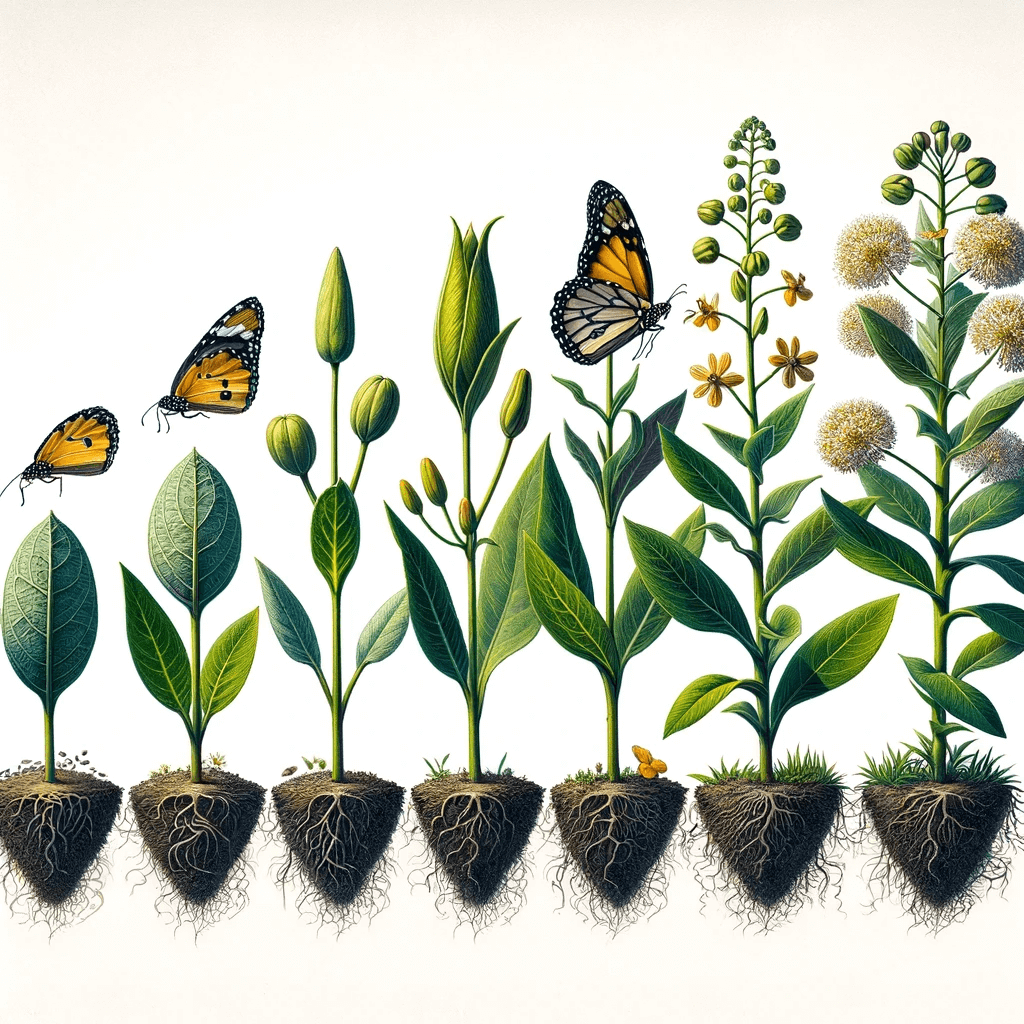
Milkweed Seeds
Gardeners Basics has high-quality milkweed seeds for your flower garden. We only offer fresh seeds with high germination rates.
Scarification methods to enhance germination rates
Scarification is a beneficial technique that can significantly enhance the germination rates of milkweed seeds. Some milkweed species' hard outer coats or seed coats can be hard, and scarification helps break through this protective layer, allowing moisture and oxygen to reach the embryo inside. There are two primary methods of scarification: mechanical and chemical.
Mechanical scarification involves physically breaking or wearing down the seed coat through various means. One approach is gently rubbing the seeds with sandpaper or a fine file until you notice slight abrasions on their surface.
Another method involves nicking each seed's outer shell with a sharp blade, careful not to damage the delicate embryo. Chemical scarification involves using chemicals to soften or dissolve the hard seed coat.
One standard method is soaking the seeds in warm water for 24-48 hours before planting them. This process helps weaken the seed coat and improve water absorption during germination.
Not all milkweed species require scarification for successful germination; some may naturally break down their hard coats over time due to weathering or other environmental factors. However, if you are facing low germination rates or working with particularly stubborn seeds, employing scarification techniques can significantly increase your chances of success when cultivating these butterfly-friendly plants from seed.
Planting Broadleaf Milkweed Seeds
Selecting an Appropriate Location for Planting
Subtopic: An Ideal Environment to nurture nature's beauty when choosing a location for planting broadleaf milkweed, it is crucial to consider the soil requirements and sunlight exposure that will ensure the successful growth of these magnificent plants.
Broadleaf milkweed thrives in well-drained soil with organic matter, as it allows for optimal root development and nutrient absorption. Avoid areas with heavy clay or compacted soils, as they can hinder the plant's growth.
Furthermore, broadleaf milkweed requires ample sunlight to flourish. It can be planted in areas with total sun exposure, where it receives at least six hours of direct sunlight daily.
Alternatively, if full sun is not available in your garden or landscape, partial shade can also support the growth of these remarkable plants. However, ensure that the area receives at least three to four hours of direct sunlight daily.
Preparing the Planting Site
Before sowing your milkweed seeds and welcoming future monarch butterfly sanctuaries into your surroundings, it is essential to prepare the planting site properly.
Begin by clearing any weeds or grasses from the chosen area. These unwanted competitors may outcompete young seedlings for resources and hinder their growth.
Remove all remnants of unwanted vegetation by hand or using appropriate tools. Next, loosen the soil using a garden fork or tiller in your chosen spot.
This process helps create a favorable environment for seed germination and root penetration by enhancing soil aeration and water drainage capabilities. Aim to break up any compacted areas without disturbing deeper layers excessively.
$2.49
Broadleaf Milkweed Seeds - Heirloom, Non-GMO, Non-Hybrid, Open-Pollinated Grow stunning Broadleaf Milkweed (Asclepias latifolia), a native perennial prized for its vibrant flowers and essential role in supporting pollinators like monarch butterflies and bees. Our seeds are heirloom, non-GMO, non-hybrid, and… read moreBroadleaf Milkweed Seeds
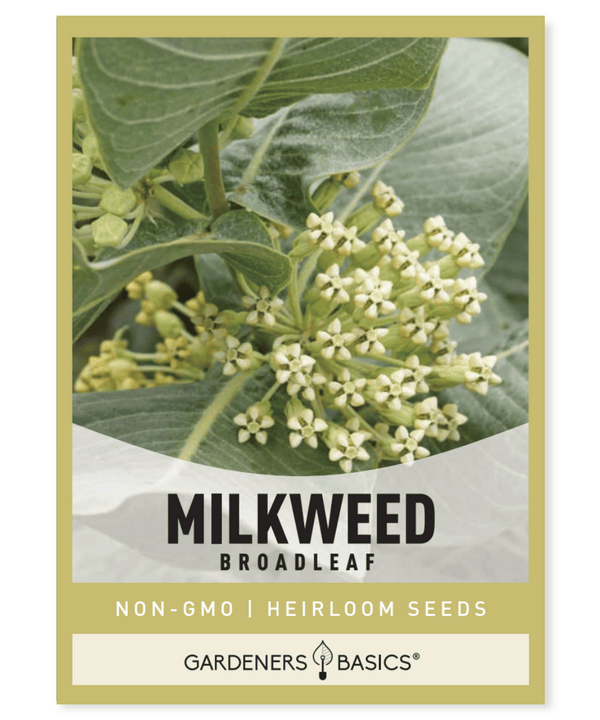
Conclusion - How To Grow Broadleaf Milkweed From Seed
Growing broadleaf milkweed from seed provides an extraordinary opportunity to contribute positively to our ecosystem by providing a crucial habitat for monarch butterflies and other pollinators. By carefully selecting an appropriate location with well-drained soil and suitable sunlight exposure, you create the perfect conditions for these butterfly seeds to bloom into beautiful, nectar-rich havens.
Remember, each milkweed seed promises future generations of monarch butterflies, so handle them with care and attention. By following the steps outlined in this guide, you are actively participating in preserving a remarkable aspect of our natural world.
Embrace this endeavor with enthusiasm, knowing that every broadleaf milkweed plant grown from heirloom seeds is a small but impactful step towards safeguarding the delicate balance of nature. Let us sow the seeds of hope and create a flourishing sanctuary for monarch butterflies to dance upon.
Frequently Asked Questions - How To Grow Broadleaf Milkweed from Seed
Q1: How long does it take for broadleaf milkweed seeds to germinate?
A1: Broadleaf milkweed seeds typically germinate within 10 to 30 days after sowing, assuming they have undergone proper cold stratification and are kept in favorable conditions.
Q2: Can I grow broadleaf milkweed in containers?
A2: Yes, you can grow broadleaf milkweed in containers. Choose a container deep enough to accommodate the plant’s long taproot, and use a well-draining potting mix.
Q3: How much sunlight does broadleaf milkweed need?
A3: Broadleaf milkweed prefers full sun, meaning at least 6 hours of direct sunlight daily. Adequate sunlight is crucial for healthy growth and blooming.
Q4: Is broadleaf milkweed invasive?
A4: Broadleaf milkweed is not generally considered invasive, especially in regions where it is native. However, it can spread in the garden, so keep an eye on its growth if you have limited space.
Q5: When is the best time to plant broadleaf milkweed seeds outdoors?
A5: The best time to plant broadleaf milkweed seeds outdoors is in the fall or early spring. Fall planting allows the seeds to stratify naturally over the winter.
Q6: Do I need to fertilize broadleaf milkweed?
A6: Broadleaf milkweed does not require heavy fertilization. A light application of a balanced, slow-release fertilizer in the spring can support growth if needed.
Q7: How do I protect my milkweed plants from pests?
A7: While broadleaf milkweed is relatively pest-resistant, keep an eye out for common pests like aphids. Use an environmentally friendly insecticide or introduce beneficial insects like ladybugs if necessary.
Q8: Can broadleaf milkweed be harmful to pets?
A8: Milkweed contains toxic compounds that can be harmful if ingested by pets. It's advisable to plant milkweed in areas that are not accessible to household pets.
Q9: How often should I water broadleaf milkweed?
A9: Water the plants deeply but infrequently, allowing the soil to dry out somewhat between waterings. Broadleaf milkweed is drought-tolerant once established.
Q10: Should I deadhead the flowers?
A10: Deadheading or removing spent flowers can encourage more blooms. However, if you're growing milkweed to support butterflies, leaving the flowers is best, as they turn into seed pods that provide food for caterpillars.
$29.95
35 Flower Seeds Variety Pack – Heirloom, Non-Hybrid, Non-GMO, Open-Pollinated – Perfect for Pollinator-Friendly Gardens Transform your garden with our 35 Flower Seeds Variety Pack, offering a stunning and diverse selection of heirloom, non-hybrid, and non-GMO seeds. Each variety in… read moreWildflower, Perennial, & Annual Flower Seed Kit | 35 Variety Pack
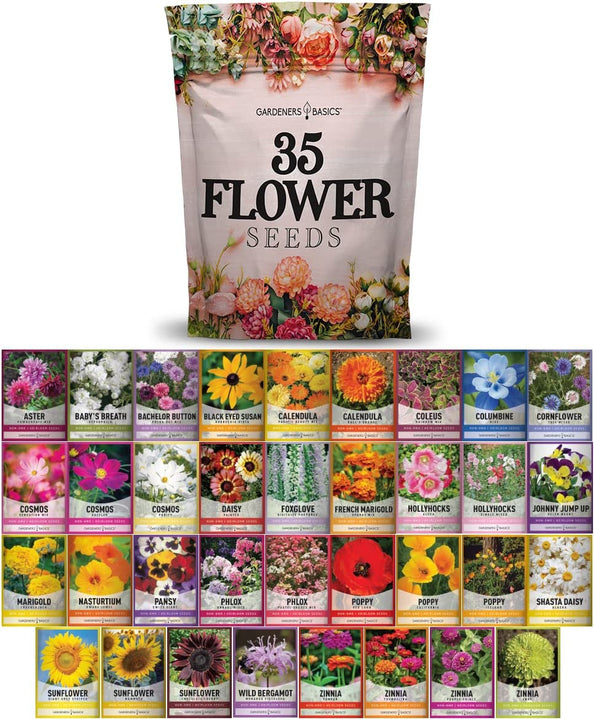
$49.95






